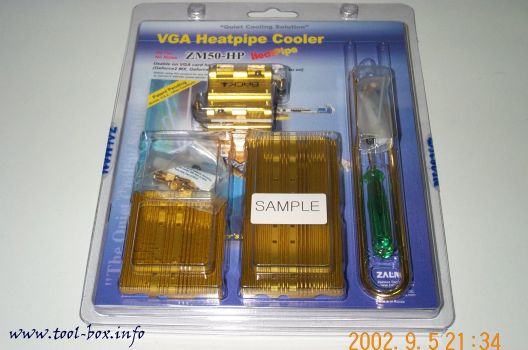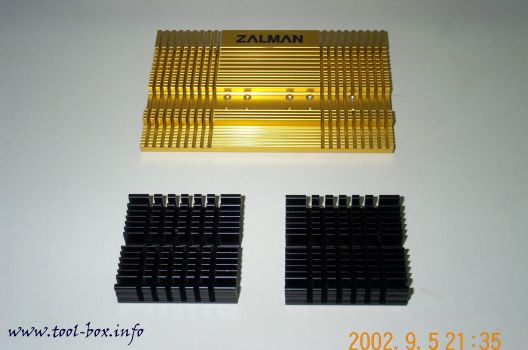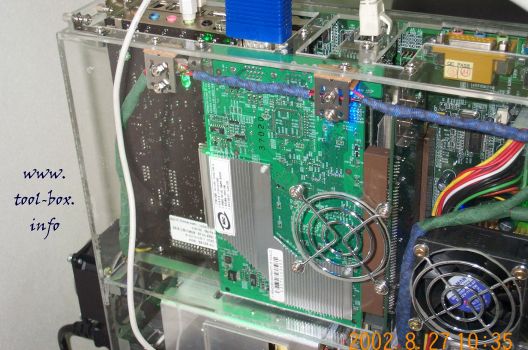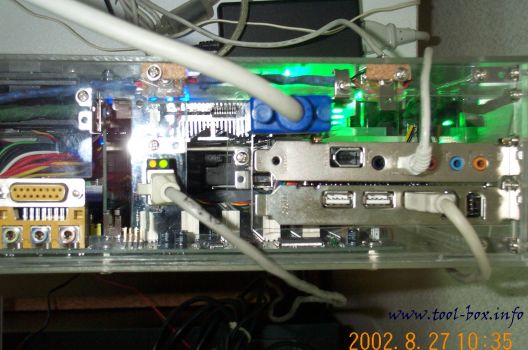The Heatpipe Mod on XPPort-II (2/11)
Posted by Wesley onThat would've been the end of the story, had it not been for the annoyingly large amount of heat pouring out from the stock heatsink installed on the GF4. The heatsink was quite hot even when running at normal speeds, which was worrying me. Furthermore, the 50mm fan installed on the heatsink made a noticeable whine, running at 12V, which was disturbing since all my system fans were running at 5V, low-noise operation. The stock heatsink had to be dealt with. Then I remembered that Zalman Tech had a new video card heatsink they wanted me to test out.

The ZM50-HP video card cooler is unlike any previous coolers Zalman had created to date. It does not have their trademark 'flower heatsink' design, while it showcases one of the newer cooling technologies known as heatpipes. A heatpipe, simply to put, is sort of a 'superconductor' in terms of thermal aspects. It can transfer heat from one end of a foot-long pipe to the other end in a matter of a couple of seconds, which is at least tens of times faster than what you can expect with a solid tube made of copper, one of the most thermally conductive elements.
The heatpipes here are used as a quick heat transport between the multiple heatsinks in the heatpipe-linked cooling system. This means that the heat generated from the heat souce (i.e. video card's GPU) is quickly and evenly moved to all the heatsinks on the heatpipe, so the effective heat dissipation area is effectively increased, no matter how far apart they may be. In contrast, a conventional heatsink cooling system will have the heat concentrated near the heat source and thus the heatsink fins farther away from the heatsink would not be as effective in dissipating the heat compared to the ones near the heat source. You can clearly see that the heatpipe can greatly enhance the cooling performance when properly integrated to a cooling system.

The ZM50-HP model, however, is targeted at budget-level video cards with relatively low heat output. For a higher performance video card like the GF4Ti card I now have in my system, I need to use a bigger heatsink. This is why I will use a heatsink from the ZM80-HP model. This model originally comes with two massive heatsinks that is almost as big as a GF4Ti card itself. You can see one of these in a picture above. I can only use this huge heatsink on the back side of the video card because the front side does not have enough room. So my personal video card cooler will be a mix of the ZM50-HP and ZM80-HP models. In addition to this, I bought some old heatsinks made for cooling classic Pentium processors that I would cut up to use as ramsinks (heatsinks for memory chips).

